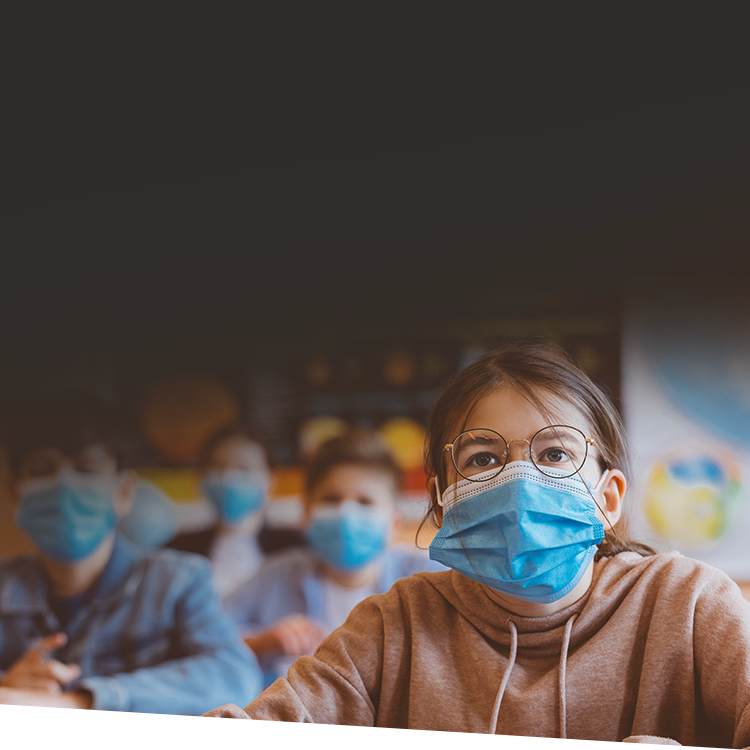This article was contributed by Scott Erickson, Head of School at Phillips Brooks School in Menlo Park, California.
This pandemic has amplified the necessity of working together at my school—students, faculty, staff, families, and school supporters—to achieve four main goals: Reopen campus, stay open, create as safe a campus environment as possible, and support our dual commitment to 100% distance learners and on-campus learners. I applaud and recognize the amazing efforts of my community in supporting all of our students as we’ve faced unprecedented challenges. They truly have made school their top priority.
As school leaders, we have also learned a great deal about educating students in a COVID-19 environment. It is clear that many challenges will extend into the fall. I, therefore, believe it is essential for community stakeholders to feel informed about our ongoing work, especially how we’re planning for the 2021–22 school year. So, since the holidays, my Leadership Team and I have been discussing how we envision starting school in the fall.
Why is this discussion important?
- Because we want to provide as much clarity as possible about the new school year’s objectives and expectations.
- Because doing so will allow us to conduct robust planning with a clear roadmap in mind.
- Because focusing on it now will afford the time to identify contingencies and be prepared to adapt to various circumstances as best we can.
- Because people understand that we’re in an evolving landscape, and they appreciate our transparency.
- Because schools are asking families, faculty, and staff to commit to 2021–22, so it is important to manage expectations and give them a sense of what to expect, even without final decisions or commitments until later.
- Because we want to keep community members informed, demonstrate our care and commitment to them, and direct our collective efforts to provide a fulfilling, academically strong program for our students.
This rigorous discussion about the fall has been driven by six essential questions. We will continue to talk about these questions and update our thinking based on new information and what we continue to learn about educating students in a COVID-19 environment.
What are the six essential questions?
1. What assumptions should frame our discussion?
For example: COVID-19 precautions to maintain high safety standards aligned with ongoing requirements; the assumption that our educators will be vaccinated; that we do not envision student vaccinations for some time, thus an underlying assumption for planning.
2. What are our objectives for fall 2021?
For example: Doing everything we can to be fully on-campus for a full-day program, as well as planning for blended (hybrid) learning if it is necessary; our plan to continue offering a 100% distance learning program for families who need it, even if the structure of it might look different than today depending on the numbers.
3. What actions should we take to achieve our objectives and what does each cost?
For example: Making talent retention a top priority so we keep our outstanding teachers and staff; continuing to review our academic model and schedule to make necessary adjustments based on changing circumstances; keeping campus infrastructures in place for educating students in a COVID-19 environment; creating an intentional program to support the transition back to school, particularly for 100% distance learners coming back to campus.
4. What unexpected issues should we name up-front for which we may need contingency plans?
For example: What-if thinking around elusive or overly expensive COVID-19 testing; what happens if vaccinations are delayed; scenario-planning for higher than expected faculty attrition for reasons out of our control; scenario-planning for more enrollment turbulence than anticipated due to pandemic-related demographic shifts.
5. How do we structure internal communication strategies about our objectives?
For example: Expand leadership team discussions into faculty-staff planning sessions to ensure their participation and engagement; individual meetings with me as Head of School for each faculty-staff member to stay connected; committee structures to support fall preparations.
6. How do we structure external communication strategies about our objectives?
For example: Trustee engagement at Board and committee meetings; discussions by our Reopening School Task Force, which includes faculty, Trustees, and parent leaders; ongoing parent communications; my Head of School Office Hours, which are like town hall meetings to engage the community on important topics.

Tune in to live webinars every week during the school year to get specific, research-backed insight you can immediately apply at your school.
I shared in a recent community email that I feel very fortunate to be part of my school community as we tackle unprecedented challenges that will extend into the next school year.
Indeed, it is hard to be precise about the fall. We do not have all of the answers to our questions, of course, but it is helpful to discuss them as we create a roadmap for 2021–22. Our ongoing success as a school depends on community partnership and our working together to support our students. It is my conviction that our six questions will help us do that.
Please join ISM’s Mike Gwaltney and me at this free webinar to hear more about the six questions schools should ask now, how these questions support fall planning, and a robust process to continue being prepared to tackle COVID-19 challenges with alacrity and confidence.
Want to ask questions related to this Source article or other topics you've encountered lately? Visit our new Community and start posting!





